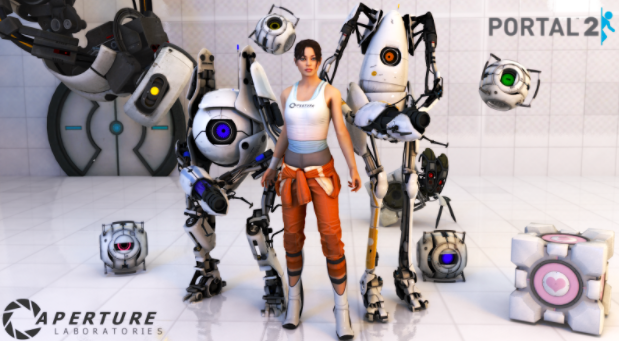A Look Back on Portal and its Incredible Legacy
When you hear the term “puzzle games,” what usually comes to mind? Tetris? Puyo Puyo? Dr. Mario? While all these games are simple and good fun in their own rights, there have been very few that have come close to that of Portal. With it’s incredible puzzles, story, gameplay, and its unique “portal mechanic,” many gamers have pointed to the series as being the peak of the puzzle games genre, inspiring many games to this day with how it approached puzzle-solving despite its last entry being nearly 11 years ago. But just how did we get to this point?
Well our story here begins, oddly enough, with a student project done by a group of students at the DigiPen Institute of Technology. Originally, the game was called Narbacular Drop, a puzzle-solving game that followed the tale of Princess No-Knees, named that because of inability to jump in the game, who was kidnapped and taken to hell, and with the use of her portals, solves puzzles in order to escape.
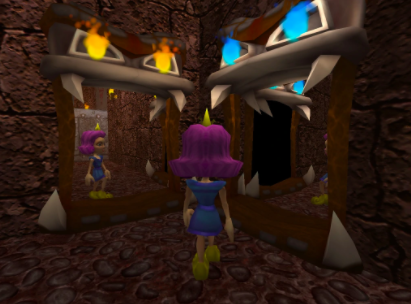 The game was shown off at a DigiPen career fair, where employees of Valve were attending, who were coming off the success of their critically acclaimed Half-Life and Counter-Strike series’. After seeing the idea, the group of students was soon all offered and accepted for employment at Valve. Once Valve claimed rights to this property, they began making changes to the game as a whole, all of which were clearly for the betterment of the game. For one, jumping was implemented, but also the entire story and design of the game were changed.
The game was shown off at a DigiPen career fair, where employees of Valve were attending, who were coming off the success of their critically acclaimed Half-Life and Counter-Strike series’. After seeing the idea, the group of students was soon all offered and accepted for employment at Valve. Once Valve claimed rights to this property, they began making changes to the game as a whole, all of which were clearly for the betterment of the game. For one, jumping was implemented, but also the entire story and design of the game were changed.
Valve wanted to create a game that could be loosely connected to the greater Half-Life series as a whole and reworked the entire game through Valve’s very own and iconic Source Engine. The game originally was released as an experimental title in Valve’s Orange Box in October of 2007 for the PC, Xbox 360, PS3, and Mac, which contained Portal, as well as Half-Life 2: Episode 2 and Team Fortress 2.
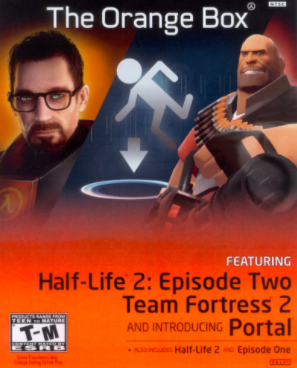 Portal follows the story of our silent protagonist, Chell, as she navigates her way through test chambers using her Portal Gun, as she is led through Aperture Science by the A.I., GLaDOS, and along the way, discovering just what all happened to people working there and discovering the truth of GLaDOS’ true intentions.
Portal follows the story of our silent protagonist, Chell, as she navigates her way through test chambers using her Portal Gun, as she is led through Aperture Science by the A.I., GLaDOS, and along the way, discovering just what all happened to people working there and discovering the truth of GLaDOS’ true intentions.
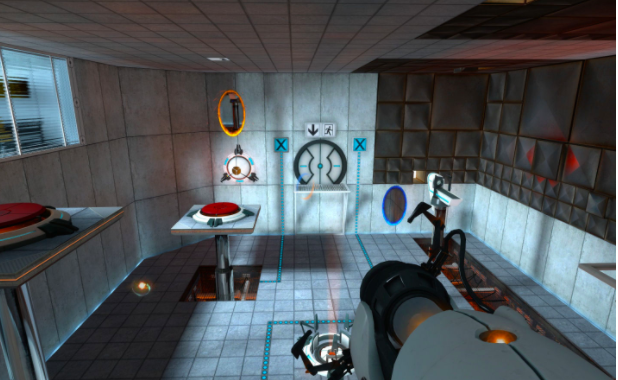 Valve’s new title was soon received near-universal success and praise for how unique and innovative Portal was, as well as giving a new definition to the puzzle-solving genre. While its sterile environment didn’t really make much of an impression, it more than made up for it with its amazing puzzles, gameplay, story, and soundtrack, and is often cited as one of the greatest video games of all time, and would eventually get its own stand-alone release on Valve’s PC platform, Steam.
Valve’s new title was soon received near-universal success and praise for how unique and innovative Portal was, as well as giving a new definition to the puzzle-solving genre. While its sterile environment didn’t really make much of an impression, it more than made up for it with its amazing puzzles, gameplay, story, and soundtrack, and is often cited as one of the greatest video games of all time, and would eventually get its own stand-alone release on Valve’s PC platform, Steam.
With the success garnered from Portal, it only made sense that Valve create a sequel, though that wouldn’t come until 2011. During that development period, however, Valve bore witness to yet another game from DigiPen named Tag: The Power of Paint, a game that involved spray-painting surfaces to alter the behavior of said surface, which would eventually turn into the conversion gels of the upcoming sequel. Valve, being Valve, also offered the group of students who made that game positions at Valve as well, and brought them on to work on Portal 2.
Valve also wanted to expand Portal 2 by offering an optional cooperative mode, as well as a longer story with new characters such as Whetley, voiced by Steven Merchant of The Office (UK) fame, and Cave Johnson, voiced by the legendary J.K. Simmons, and deeper exploration of GLaDOS and Aperture Science. New ideas such as light bridges, refraction blocks, lasers, and levitation fields were also added to the overall game.
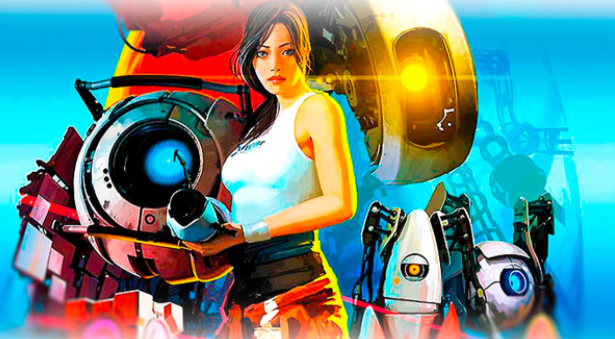 Eventually, Portal 2 would released in April of 2011 for PC, Xbox 360, PS3, and Mac, and would be met with even greater success than the original, which is typical for sequels of Valve games to receive higher praise than the first. In the game’s single-player campaign, you once again take the role of Chell, who meets with the helper core, Whetley, and once again have to navigate your way through the now ruined Aperture Science following the events of the previous game. The game was also praised for its cooperative mode, following the robots ATLAS and P-body, serving as a sort of follow-up to the end of the single-player story. With many new mechanics, amazing story and humor, and exceptional puzzles, like Portal, Portal 2 is considered a must-play by many a gamer and many a critic.
Eventually, Portal 2 would released in April of 2011 for PC, Xbox 360, PS3, and Mac, and would be met with even greater success than the original, which is typical for sequels of Valve games to receive higher praise than the first. In the game’s single-player campaign, you once again take the role of Chell, who meets with the helper core, Whetley, and once again have to navigate your way through the now ruined Aperture Science following the events of the previous game. The game was also praised for its cooperative mode, following the robots ATLAS and P-body, serving as a sort of follow-up to the end of the single-player story. With many new mechanics, amazing story and humor, and exceptional puzzles, like Portal, Portal 2 is considered a must-play by many a gamer and many a critic.
Unexpectedly, some professional and university studies, such as one done by Florida State University, have found that both Portal and Portal 2 have helped the mind as well, with their puzzles help to build important problem-solving skills, critical thinking, and overall brain training. And others have cited Portal 2’s co-op mode to help build real-world cooperative skills. Essentially, the Portal series is tricking its players into being smart.
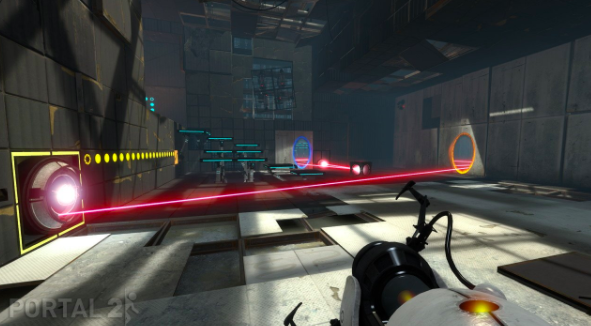 Though some may feel that a Portal 3 is now long overdue, I personally feel that Portal 2 really wrapped up the overall story quite well. Still, though, the effects of Portal and its influence throughout the gaming industry can still be felt to this very day. While the portal mechanic has not really been replicated in any other games, there have been games that have definitely taken some inspiration from this iconic series.
Though some may feel that a Portal 3 is now long overdue, I personally feel that Portal 2 really wrapped up the overall story quite well. Still, though, the effects of Portal and its influence throughout the gaming industry can still be felt to this very day. While the portal mechanic has not really been replicated in any other games, there have been games that have definitely taken some inspiration from this iconic series.
One game I played recently, an indie game named Superliminal, definitely had that Portal feel to it, with having to solve puzzles in a first-person perspective and messing with the environment. However, Superliminal, rather than mess portals, messes with perspective, essentially making you look at everything at every angle possible, as well as having its story take place in a dream rather than a laboratory, and explored the idea of having to think of every possible solution to a problem that you can, no matter how odd it may seem, promoting an idea of real outside the box thinking.
Another game, The Talos Principle, a game developed by Croteam, was also a first-person puzzle game involving solving a series of tetromino-shaped “sigils” by connecting them in mazes while overcoming obstacles and following the tale of a robot with a seemingly human conscience. The game explores deep ideas of existence and personal existential problems.
Portal truly changed the video game landscape as we know it. What started as a simple concept of solving puzzles with portals made by a group of college students turned into one of the most beloved and influential game franchises of all time. Portal’s legacy is truly a spectacular one and one that will forever remain one of the most important legacies in all of gaming.
Your donation will support the student journalists of Paschal High School - TX. Your contribution will allow us to purchase equipment and cover our annual website hosting costs.



